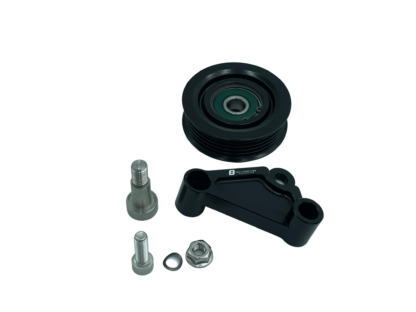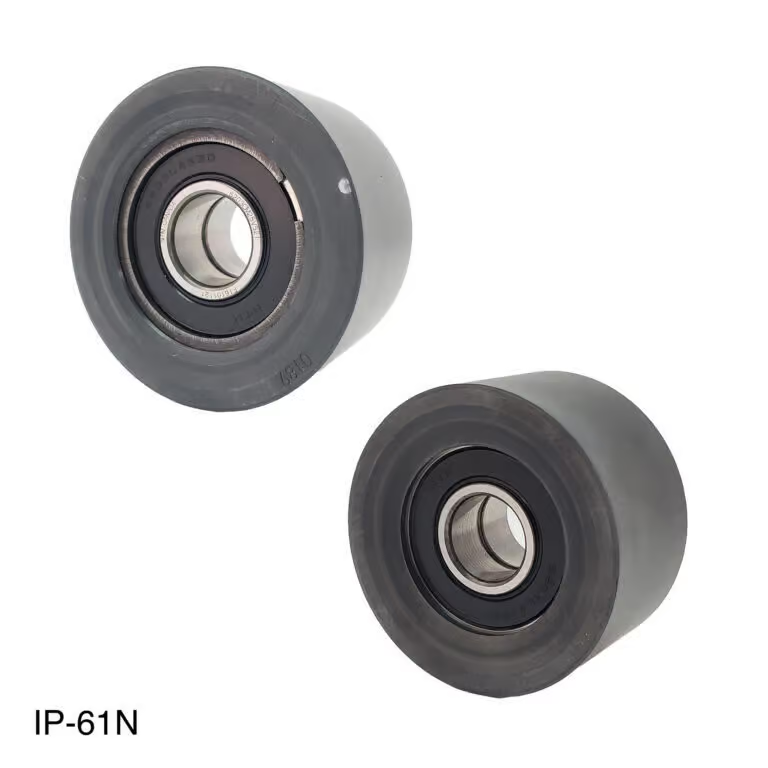Product Description
Product Description
Product Parameters
| Parameter of conveyor drum pulley | |||
| Type | Belt width | Standard diameter | Length(mm) |
| (mm) | (mm) | ||
| Length of pulley depends on the width of conveyor belt | 500 | 500 | Length of pulley
depends on the width of conveyor belt |
| 650 | 500~630 | ||
| 800 | 630~1000 | ||
| 1000 | 800~1150 | ||
| 1200 | 800~1150 | ||
| 1400 | 1000~1350 | ||
| 1600 | 1150~1600 | ||
| 1800 | 1150~1800 | ||
| 2000 | 1350~2000 | ||
| 2200 | 1600~2200 | ||
| 2400 | 1800~2400 | ||
Production Workshop
Application scenario
Our Advantages
FAQ
Q1. When can I get the price?
Usually we quote within 24 hours after we get your inquiry.
Q2: Could design and drawing the pulley for our special usage?
A: Of course, our professional engineer could design and drawing for you ASAP.
Q3:How to install the Ceramic Pulley Lagging?
A:We have experience of installation for 20 years, and could supply guidance for you by video.
Q4: How long is your delivery time?
A: Generally it is 5-10 days if the goods are in stock. or it is 15-20 days if the goods are not in stock, it is according to quantity.
Q5: Do you have foreign experience for Ceramic Pulley Lagging rubber sheet?
A: Yes, the ceramic lagging rubber sheet we manufactured have exported to Australia , South Africa , Brazil , etc.
Q6. How does your factory of regarding quality control?
A: To make sure customer buy good quality material and service from us. Before customer place order, we will send drawing to customer for approval. Before shipment, our QC staff will check quality 1pc by 1pc. Quality is our culture.
| Material: | Stainless Steel |
|---|---|
| Surface Treatment: | Baking Paint |
| Motor Type: | Frequency Control Motor |
| Samples: |
US$ 70/Piece
1 Piece(Min.Order) | Order Sample |
|---|
| Customization: |
Available
| Customized Request |
|---|
.shipping-cost-tm .tm-status-off{background: none;padding:0;color: #1470cc}
|
Shipping Cost:
Estimated freight per unit. |
about shipping cost and estimated delivery time. |
|---|
| Payment Method: |
|
|---|---|
|
Initial Payment Full Payment |
| Currency: | US$ |
|---|
| Return&refunds: | You can apply for a refund up to 30 days after receipt of the products. |
|---|
What are some real-world examples of idler pulley applications in various industries?
Idler pulleys have diverse applications across various industries where belt-driven power transmission is utilized. Let’s explore some real-world examples of idler pulley applications in different industries:
1. Automotive Industry:
– Engine Systems: Idler pulleys are commonly used in automotive engines to guide and tension accessory belts that drive components like alternators, water pumps, power steering pumps, and air conditioning compressors.
– Timing Belt Systems: In timing belt systems, idler pulleys help maintain proper tension and alignment of the timing belt, ensuring precise synchronization of engine components.
2. Manufacturing Industry:
– Conveyor Systems: Industries like manufacturing, mining, and logistics employ conveyor systems with idler pulleys to guide and support conveyor belts, facilitating the movement of materials within production lines and warehouses.
– Industrial Machinery: Various industrial machinery, such as woodworking machines, textile machinery, and printing presses, utilize idler pulleys in their belt drive systems for power transmission and tension control.
3. Agricultural Industry:
– Farm Equipment: Agricultural machinery like combines, tractors, and harvesters incorporate idler pulleys to guide and tension belts that drive components such as power take-off (PTO) systems, augers, and conveyors.
4. HVAC Industry:
– Heating and Cooling Systems: HVAC systems commonly use idler pulleys to maintain tension and proper alignment of belts driving components like fans, blowers, compressors, and pumps.
5. Printing and Paper Industry:
– Printing Machines: Printing and copying machines use idler pulleys to guide and tension belts that drive paper feed mechanisms, rollers, and other components involved in the printing process.
– Paper Processing: Idler pulleys are utilized in paper processing machinery to guide and tension belts that transport paper rolls, ensuring smooth operation during cutting, folding, and packaging processes.
6. Exercise Equipment Industry:
– Fitness Machines: Many types of exercise equipment, such as treadmills, stationary bikes, and rowing machines, incorporate idler pulleys in their belt drive systems to guide and tension the belts that provide resistance or transmit power.
These are just a few examples, and idler pulleys can be found in numerous other industries and applications where belt-driven power transmission is integral to the operation of machinery and systems.
How do idler pulleys impact the performance of automotive and industrial systems?
Idler pulleys play a crucial role in the performance of automotive and industrial systems. Here’s a detailed explanation of how idler pulleys impact the performance of these systems:
1. Belt Tension and Stability:
Idler pulleys help maintain proper belt tension in automotive and industrial systems. They guide and support the belts, ensuring they remain engaged with the pulleys and operate with the desired tension. Proper belt tension is crucial for efficient power transmission, preventing slippage, and maintaining stability in the system. Idler pulleys contribute to the overall reliability and performance of the system by ensuring consistent and reliable belt tension.
2. Belt Routing and Alignment:
Idler pulleys assist in routing and aligning belts in automotive and industrial systems. They are strategically positioned to guide the belts along the desired path, ensuring they are properly aligned with other pulleys and components. Correct belt routing and alignment minimize wear, reduce noise, and optimize power transfer efficiency. Idler pulleys help maintain the desired belt alignment, which is crucial for the smooth operation and longevity of the system.
3. Load Distribution:
Idler pulleys contribute to the even distribution of loads in automotive and industrial systems. By guiding the belts and supporting their movement, idler pulleys help distribute the load evenly across the system. This helps prevent excessive stress on specific components and promotes balanced wear and tear. Proper load distribution enhances the overall performance, reliability, and lifespan of the system.
4. Noise and Vibration Reduction:
Idler pulleys play a role in reducing noise and vibration in automotive and industrial systems. They help dampen vibrations caused by belt operation, minimizing noise and improving the comfort and user experience. By reducing noise and vibration levels, idler pulleys contribute to a quieter and smoother operation of the system.
5. System Efficiency and Energy Conservation:
Efficient idler pulley operation positively impacts the overall efficiency of automotive and industrial systems. Well-designed idler pulleys with low friction and proper bearing selection minimize power losses and maximize energy conservation. Idler pulleys that operate smoothly and efficiently contribute to improved system performance and reduced energy consumption.
6. Component Protection:
Idler pulleys help protect other system components, such as belts, by ensuring proper tension, alignment, and load distribution. By maintaining optimal belt operation, idler pulleys prevent excessive wear, slippage, and premature failure of belts and other related components. This protection enhances the reliability and longevity of the entire system.
7. System Reliability and Durability:
The proper functioning of idler pulleys is crucial for the overall reliability and durability of automotive and industrial systems. Idler pulleys that are correctly sized, well-maintained, and appropriately lubricated contribute to the smooth and continuous operation of the system. They help minimize downtime, reduce the risk of component failure, and ensure the system can perform its intended functions reliably over an extended period.
Overall, idler pulleys have a significant impact on the performance, efficiency, reliability, and durability of automotive and industrial systems. Their role in maintaining belt tension, routing and alignment, load distribution, noise reduction, system efficiency, component protection, and overall system reliability makes them essential components in these applications.
What is an idler pulley, and what is its role in mechanical systems?
An idler pulley is a specific type of pulley that is used in mechanical systems. Here’s a detailed explanation of what an idler pulley is and its role in mechanical systems:
Definition:
An idler pulley is a pulley that is not directly connected to a power source or used for power transmission. Instead, it is used to guide and redirect a belt or rope in a system. The idler pulley is typically positioned in such a way that it changes the direction of the belt or rope, adjusts tension, or provides support to ensure smooth operation.
Role in Mechanical Systems:
The primary role of an idler pulley in mechanical systems is to maintain proper tension and alignment of belts or ropes. It helps to redirect the path of the belt or rope, ensuring that it remains in the correct position and stays engaged with other pulleys or components.
Here are some specific roles and functions of idler pulleys:
1. Belt Tension:
An idler pulley can be used to adjust and maintain the tension in a belt or rope. By adding or removing an idler pulley or adjusting its position, the tension in the belt can be properly controlled. This is crucial for preventing slippage, ensuring efficient power transmission, and extending the lifespan of the belt.
2. Directional Change:
In some systems, an idler pulley is strategically placed to change the direction of the belt or rope. By guiding the belt along a different path, the idler pulley allows the belt to reach components that would otherwise be inaccessible or difficult to connect directly. This enables flexibility in designing mechanical systems and facilitates the proper functioning of various components.
3. Belt Alignment:
An idler pulley helps maintain proper alignment of belts or ropes. It ensures that the belt remains centered on the pulleys and does not deviate from its intended path. Proper alignment is vital for efficient power transmission, as misaligned belts can cause increased friction, wear, and loss of energy.
4. Load Distribution:
In systems with multiple belts or ropes, an idler pulley can be used to distribute the load evenly. By introducing an idler pulley between two driving pulleys, the load can be divided, reducing stress on individual components and improving overall system performance.
5. Noise and Vibration Reduction:
An idler pulley can help reduce noise and vibration in mechanical systems. By providing additional support and tension to belts or ropes, it minimizes excessive movement and vibration, resulting in quieter operation and increased stability.
Idler pulleys are commonly found in various applications, including automotive engines, HVAC systems, conveyor systems, and industrial machinery. Their role in maintaining tension, guiding belts, adjusting alignment, distributing load, and reducing noise makes them essential components in ensuring the smooth and efficient operation of mechanical systems.
editor by CX
2023-11-27




